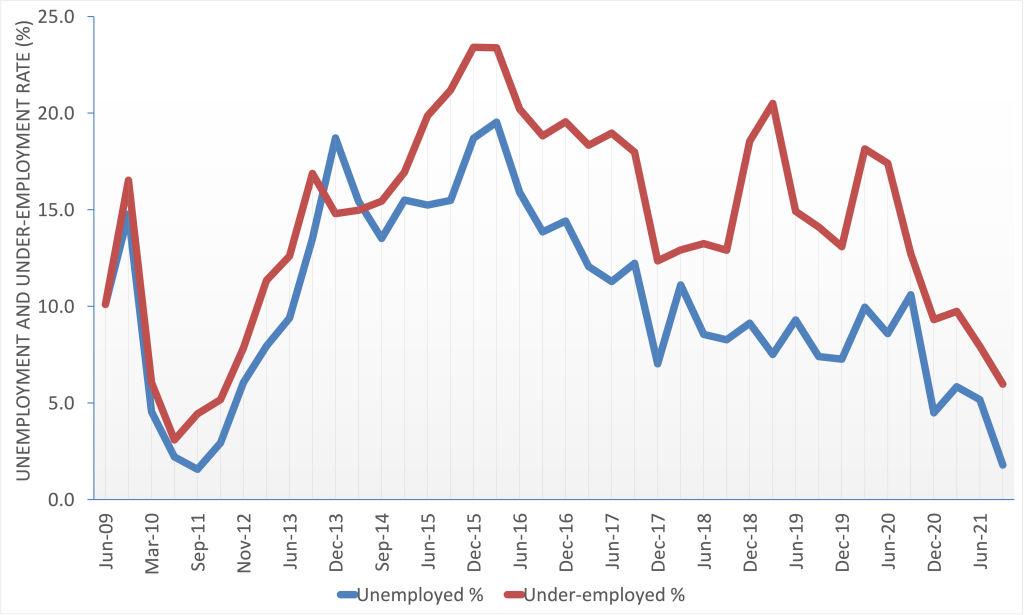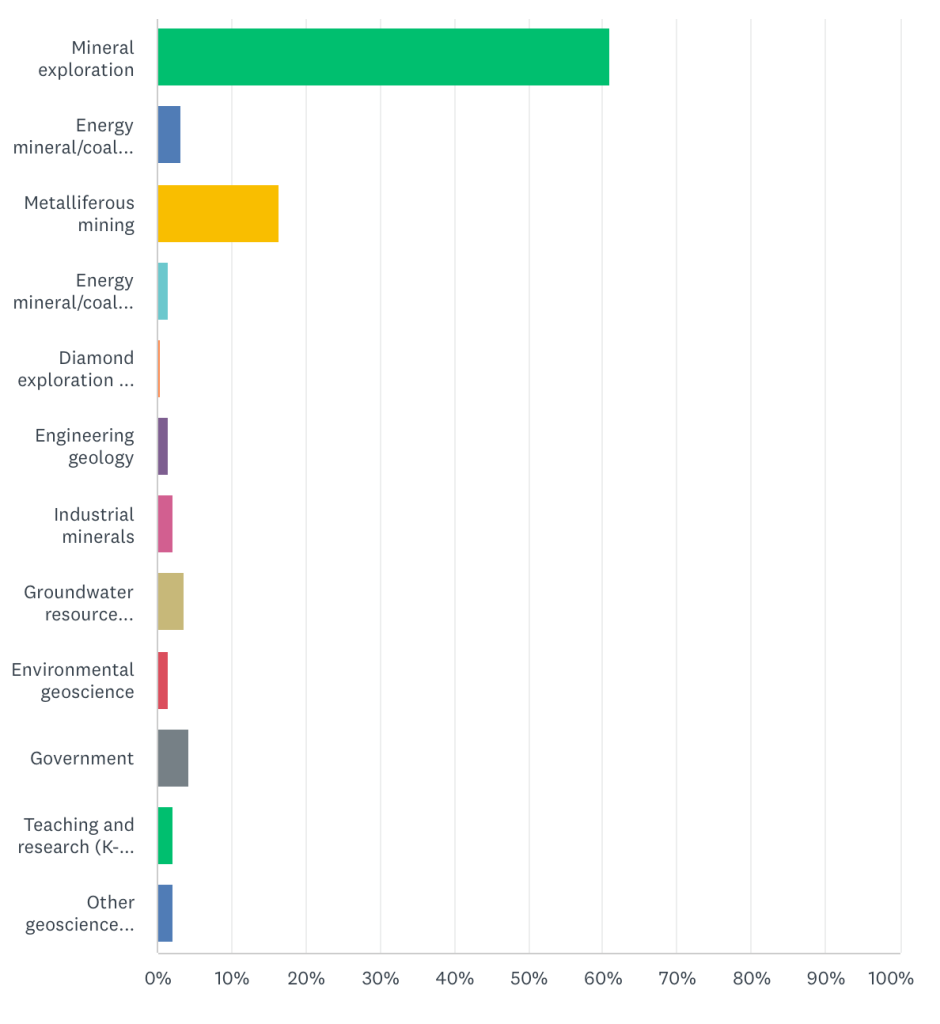Geoscientist unemployment fell to 1.8% in September 2021: equal to the lowest level recorded in 10 years of quarterly employment surveys by the Australian Institute of Geoscientists (AIG).
The under-employment rate amongst geoscientists (respondents able to secure 25% or less of their desired workload) fell to 6.0%.

The unemployment and under-employment rates in the previous (June 2021) survey were 5.2% and 7.9% respectively.
AIG spokesperson Andrew Waltho suggested that “the survey results supported anecdotal evidence of improved industry activity and a tight market for geoscience skills across all sectors of the geoscience profession across Australia during the past year”. “The unemployment rate of 1.8% in the latest survey matches that recorded in the first quarter of 2011, when geoscientist employment in Australia bounced following the global financial crisis of 2009-2010” Mr Waltho said.
Unemployment and under-employment fell in all states, except for New South Wales.
Western Australia recorded an unemployment rate of 2.9%. No survey respondents identified as being unemployed in any other state.
Under-employment in Western Australia was 3.9%, 2.6% in Queensland (down from 15.6% in June 2021), 7.1% in Victoria (down from 14.3% in June 2021) and 20.0% in New South Wales. New South Wales was the only state to see an increase in under-employment, with the rate up from 15.4% in June 2021.
Survey respondents expressed a high level of confidence (65%) in maintaining their current employment for the next 12 months. Only two percent of respondents were not confident in retaining employment beyond the next three months.
Increased employment prospects and a correspondingly market for professional geoscientific skills resulted in 43% of respondents reporting improved employment conditions, and 52% of respondents reporting that their employment conditions has been maintained over the previous 12 months. An increase in respondents reporting improved conditions is expected if unemployment remains very low.
Most survey respondents work in mineral exploration (61%) and metalliferous mining (16%), followed by energy minerals and resources exploration (3%).

Submissions for the next survey, for the fourth quarter (October – December) 2021 will open in January 2022.
Contributors to the survey are thanked for their continuing support.